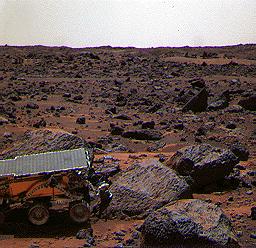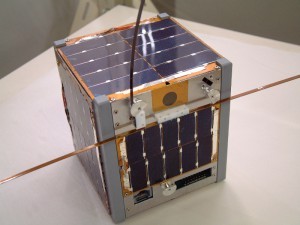The electrical power subsystem includes power storage, generation, and distribution. The power system is a fundamental subsystem, and can account for a significant portion of a CubeSats mass. Power storage is done with batteries: either non rechargeable batteries, or rechargeable batteries. Power generation technologies include photovoltaic cells, radioisotope power generators, or fuel cells. Power management systems facilitate power control to spacecraft loads. Power management takes a variety of forms and is often custom-designed to meet specific mission requirements. Power system engineers often target a high power or high power-to-mass ratio (W h / kg) when selecting power generation and storage technologies to minimize system mass impact.
Power is one of the primary budgets for your satellite, and is a hard limit. If you exceed your communication bandwidth budget, you lose some, but not all, data, but if you exceed your power budget, your entire satellite cannot function.
Solar energy is not always available during spacecraft operations; the orbit, mission duration, distance from the Sun, or peak loads may necessitate stored, on-board energy. Batteries are used for power storage and are classified according to their different electrochemistries. Since non rechargeable have a limited life, they are used only for short mission durations (less than 1 week). Silver-zinc are typically used as they are easier to handle and discharge at a higher rate, however there is also a variety of lithium-based non rechargeable batteries . Due to the extremely short mission durations with non rechargeable cells, the current state-of-the-art energy storage systems use lithium ion (Li-ion) or lithium polymer (LiPo) rechargeable cells. Typically, Li-ion cells deliver an average voltage of 3.6 V .
Most landers have used electric batteries. The Apollo Lunar Module used silver oxide zinc batteries. The Viking Lander used nickel cadmium batteries along with a radioisotope thermoelectric generator. It's important that batteries are light weight, can hold a charge, and if partnered with solar panels can be charged efficiently. For the Apollo Lunar rovers, power was provided by two 36 volt silver oxide zinc non rechargeable batteries with a capacity of 121 amp-hour. Sojourner used 9 lithium thionyl chloride (LiSOCL2) D-cell sized batteries. This combined batteries/solar panels provided Sojourner 30W of peak power (mid-sol) which included 16W peak solar panel production. The the MERs (Spirit and Opportunity) used lithium ion batteries similar to what is used today in most smartphones and laptop computers. The Curiosity and Perseverance rovers also used lithium ion batteries along with a radioisotope thermoelectric generator.
Solar cells are the most common method of power generation for CubeSats. Most CubeSats are equipped with solar panels and rechargeable batteries for power. Limitations to solar cell use include diminished efficacy in deep space applications, no generation during eclipse periods, degradation over mission lifetime, high surface area, mass, and cost. Photovoltaic cells, or solar cells, are made from thin semiconductor wafers that produce electric current when exposed to light. The solar flux is the amount of power that passes through a given area at a given distance from the sun. The light available to a spacecraft solar array, also called solar intensity, varies as the inverse square of the distance from the Sun. The projected surface area of the panels exposed to the Sun also affects generation, and varies as a cosine of the angle between solar panel and the Sun. Most cells manufactured today for terrestrial applications are single junction cells, using a single material that is responsive to a particular portion of solar radiation spectrum, where the photon's energy is higher than the band gap of the cell material. While single junction cells are cheap to manufacture, they carry a relatively low efficiency, usually less than 20%. However, in the aerospace industry, triple-junction cells are commonly used due to their high efficiency to cost ratio compared to other cells.
All rovers have used electric motors to drive wheels, but they didn't use the same batteries. Most rovers have used electric batteries, or batteries partnered with solar panels. For the Lunokhod rovers, power was supplied by batteries charged by a solar panel on the inside of a round hinged lid which covered the instrument bay. China's Yutu rovers power supply included solar panels.
Power management systems control the flow of power to spacecraft subsystems and instruments and are often custom designed for specific spacecraft power requirements. However, several manufacturers have begun to provide a variety of power management devices for use on CubeSats. Several manufacturers supply power systems which typically have a main battery bus voltage of 8.2 V, but can distribute a regulated 5.0 V and 3.3 V to various subsystems. The power system also protects the electronics and batteries from off nominal current and voltage conditions. Well known producers of power management systems that focus on CubeSats include Pumpkin, GomSpace, Stras Space and AAC-Clyde.
Driven largely by weight and size limitations, small spacecraft are using advanced power generation and storage technology such as greater than 29% efficient solar cells and lithium-ion batteries. The higher risk tolerance of small spacecraft has allowed both the early adoption of technologies like flat lithium-polymer cells as well as COTS products not designed for spaceflight.


